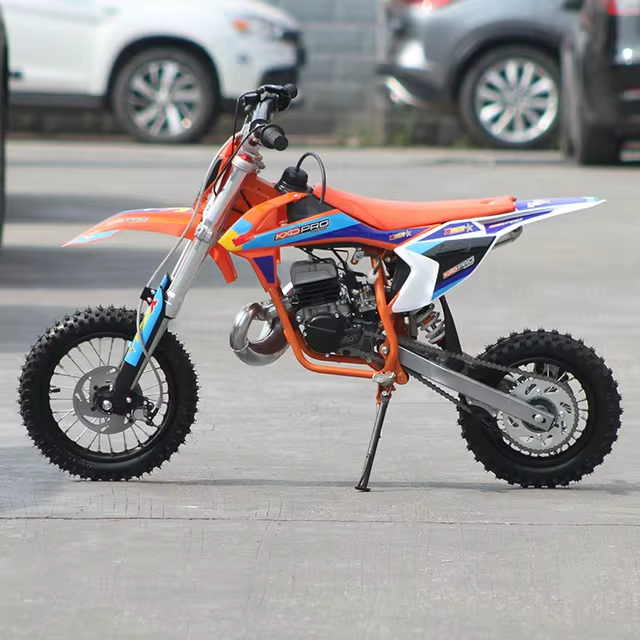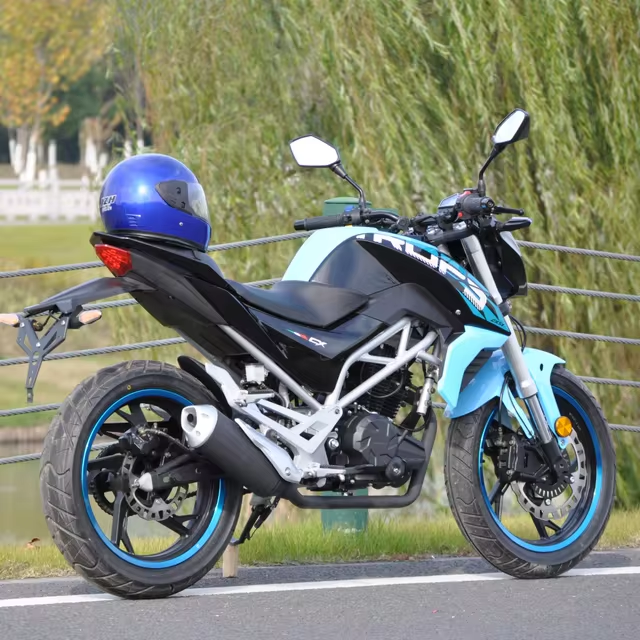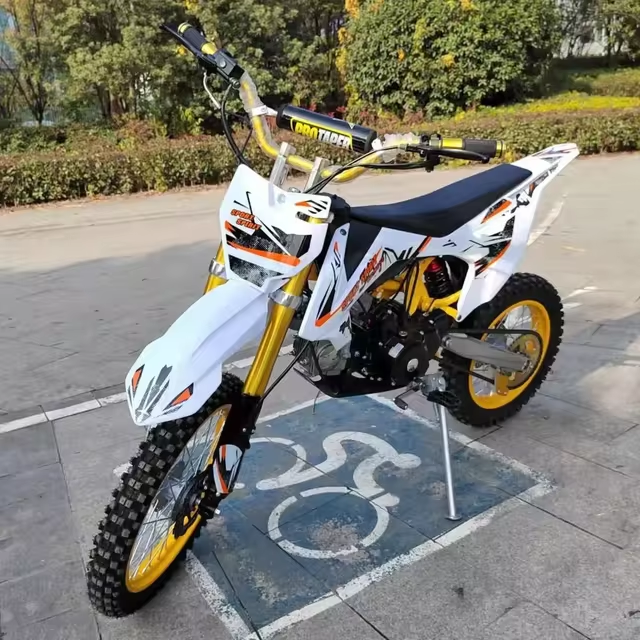Choosing your first motorcycle is an exhilarating yet daunting task. The world of motorcycles is vast, with countless options uniquely suited to different riding styles and skill levels. Among the sea of choices, how do you discern the best starter motorcycle for you? This article dives deep into features, models, and factors to consider when selecting a beginner-friendly bike, ensuring your first ride is both safe and exhilarating.
The Importance of Choosing the Right Starter Motorcycle
When you’re new to motorcycling, your first bike sets the tone for your entire riding experience. Starting with a bike that suits your skill level and comfort can significantly enhance your learning curve and enjoyment. A poor choice, on the other hand, could discourage you from riding altogether. Therefore, identifying the ideal starter motorcycle is crucial for setting a solid foundation in your motorcycling journey.
Safety First: Why It’s Crucial for Beginners
Beginner motorcyclists are more prone to accidents due to inexperience. Hence, safety should be a top priority when selecting your first motorcycle. Most manufacturers today are mindful of beginner riders and offer numerous safety features like anti-lock braking systems (ABS), traction control, and user-friendly throttles. A beginner motorcycle’s manageable power and weight also make it easier to handle, reducing the risk of mishaps.
Factors to Consider in a Starter Motorcycle
Before diving into specific models, understanding the factors that make a motorcycle beginner-friendly is essential. From engine size to ergonomics, several characteristics can either make your first ride a pleasure or a nightmare.
Engine Size: The Sweet Spot for Beginners
Engine size is often the first aspect riders look at. Generally, a bike with an engine size between 250cc to 500cc provides a suitable balance of power and control for beginners. While larger engines offer more speed and power, they can be intimidating for new riders who haven’t yet mastered the basics of bike control.
Weight and Size: Manageability on the Road
The weight and size of the motorcycle are critical factors. A lighter bike is easier to maneuver, particularly in slow-speed situations like parking or navigating through traffic. For beginners, bikes weighing between 300 to 400 pounds usually offer an optimal balance of stability and manageability. Moreover, having a bike with a low seat height can help shorter riders feel more comfortable and confident.
Ergonomics: Comfort During Long Rides
Ergonomics play a crucial role in how comfortable you’ll be during long rides. Bikes with upright seating positions, well-padded seats, and reachable handlebars offer a more comfortable experience, reducing fatigue and allowing you to focus on the joy of riding.
Cost and Maintenance: What You Should Expect
As a beginner, it’s wise to opt for a bike that is cost-effective both in terms of initial purchase price and ongoing maintenance. Motorcycles with simpler mechanics are usually easier and cheaper to maintain. Also, consider that new riders are more likely to drop their bikes, so starting with a less expensive model might be prudent.
Modern Features: Enhancing the Riding Experience
While classic bikes have their charm, modern motorcycles often come equipped with features that enhance safety and convenience. ABS, traction control, and even smartphone connectivity are now commonplace, making riding more enjoyable and less risky for novices.
Recommended Starter Motorcycles
Numerous models fit the criteria for an excellent beginner bike. Below, we dive into some of the most recommended options that stand out for their balance of power, ergonomics, safety features, and affordability.
Yamaha YZF-R3: The Sporty Choice
The Yamaha YZF-R3 is often lauded as one of the best starter motorcycles. With a 321cc engine, it offers a commendable mix of power and control. The bike’s lightweight frame makes it incredibly nimble, while its modern ergonomics provide a comfortable riding position. Its sporty look and reliable performance make it a popular choice for new riders who want to experience the thrill of a sportbike without overwhelming power.
Honda CB300R: The Stylish Commuter
The Honda CB300R is another excellent choice for beginners, especially those looking for a stylish commuter bike. It features a 286cc single-cylinder engine that offers a smooth, predictable power delivery. The bike’s lightweight construction and upright seating position make it ideal for city riding and long commutes. Additionally, it comes equipped with ABS brakes, adding an extra layer of safety.
Kawasaki Ninja 400: The Balanced Performer
Kawasaki has long been a trusted name in the motorcycle industry, and the Ninja 400 lives up to the brand’s reputation. With a 399cc engine, this motorcycle offers a commendable blend of power and user-friendliness. It’s lightweight and has an aggressive yet comfortable riding position, making it perfect for both city commuting and weekend rides. Its advanced features like ABS and a digital display further enhance its appeal to beginner riders.
Suzuki SV650: The Versatile Choice
The Suzuki SV650 is often recommended for new riders who are looking for a versatile bike. Its 645cc V-twin engine may sound large, but the bike’s overall design makes it approachable for beginners. With user-friendly power delivery and a comfortable upright seating position, it’s a great option for various riding styles. Additionally, the SV650’s affordability and reliability make it a favorite for novice motorcyclists.
KTM 390 Duke: The Light and Agile Street Fighter
For those who prefer a bike with a bit of a rebellious streak, the KTM 390 Duke is an excellent choice. Its 373cc engine offers plenty of punch without being overwhelming. The bike’s lightweight design and sharp handling make it perfect for zipping through city streets. Its bold aesthetics and modern features like a TFT display and smartphone connectivity make it a favorite among younger riders.
Riding Gear Essentials for Beginners
Selecting the best starter motorcycle is only part of the equation; having the right riding gear is equally important for a safe and enjoyable riding experience.
Helmets: Protecting Your Most Valuable Asset
A helmet is the most crucial piece of safety gear. Look for helmets that meet DOT or ECE standards for maximum protection. Full-face helmets offer the best protection, covering not just your head but also your face and chin.
Jackets: Combining Safety and Style
A sturdy motorcycle jacket can protect you from road rash and injuries in case of an accident. Look for jackets made from durable materials like leather or reinforced textiles and equipped with CE-rated armor on the elbows, shoulders, and back.
Gloves: A Firm Grip and Added Protection
Motorcycle gloves improve your grip on the handlebars and protect your hands in case of a fall. Choose gloves made from durable materials with sufficient padding and armor.
Boots: Essential for Safety and Comfort
Motorcycle boots offer protection for your feet, ankles, and shins. They should be sturdy, with non-slip soles and reinforced areas to protect against injuries.
Riding Pants: Don’t Overlook Leg Protection
Just like jackets, riding pants made from durable materials and equipped with protective armor can offer significant protection in an accident. Jeans reinforced with Kevlar or specific riding pants come in various styles, ensuring you don’t have to compromise on looks for safety.
 Tips for New Riders
Tips for New Riders
Even with the best starter motorcycle and optimal gear, there are several tips new riders should keep in mind to ensure their riding experience is both safe and enjoyable.
Take a Motorcycle Safety Course
One of the best ways to prepare for riding is to take a motorcycle safety course. These courses teach you essential skills and behaviors that can significantly reduce your risk of an accident. In many places, completing a course can also help lower your insurance premiums.
Practice in Safe, Open Areas
Before hitting busy roads, practice in safe, open areas like empty parking lots. Focus on basic skills like starting, stopping, turning, and maneuvering at low speeds. Practicing in a controlled environment helps build your confidence and proficiency.
Always Conduct a Pre-Ride Check
Before each ride, perform a quick check of your motorcycle. Inspect the tires, brakes, lights, and fluids to ensure everything is in working order. A pre-ride check can help you spot potential issues before they become serious problems on the road.
Ride Defensively
Assume that other drivers may not see you. Maintain a safe following distance, avoid blind spots, and be prepared to react to sudden actions from other vehicles. Defensive riding significantly reduces your chances of getting into an accident.
Keep Improving Your Skills
Motorcycling is a skill that improves with time and practice. Continue to challenge yourself by riding in different conditions and terrains, and even consider advanced riding courses once you’ve gained some experience.
Conclusion: Embarking on Your Motorcycling Journey
Selecting the best starter motorcycle is a meaningful step in your motorcycling journey. A well-chosen bike can make your initial riding experiences both enjoyable and educational, setting a solid foundation for years of riding pleasure. From considering engine size and ergonomics to picking the right gear and practicing safe riding habits, this comprehensive guide aims to equip you with the knowledge needed to make an informed decision. With the best starter motorcycle and the right mindset, you’re well on your way to a rewarding and thrilling riding journey. Safe riding!


